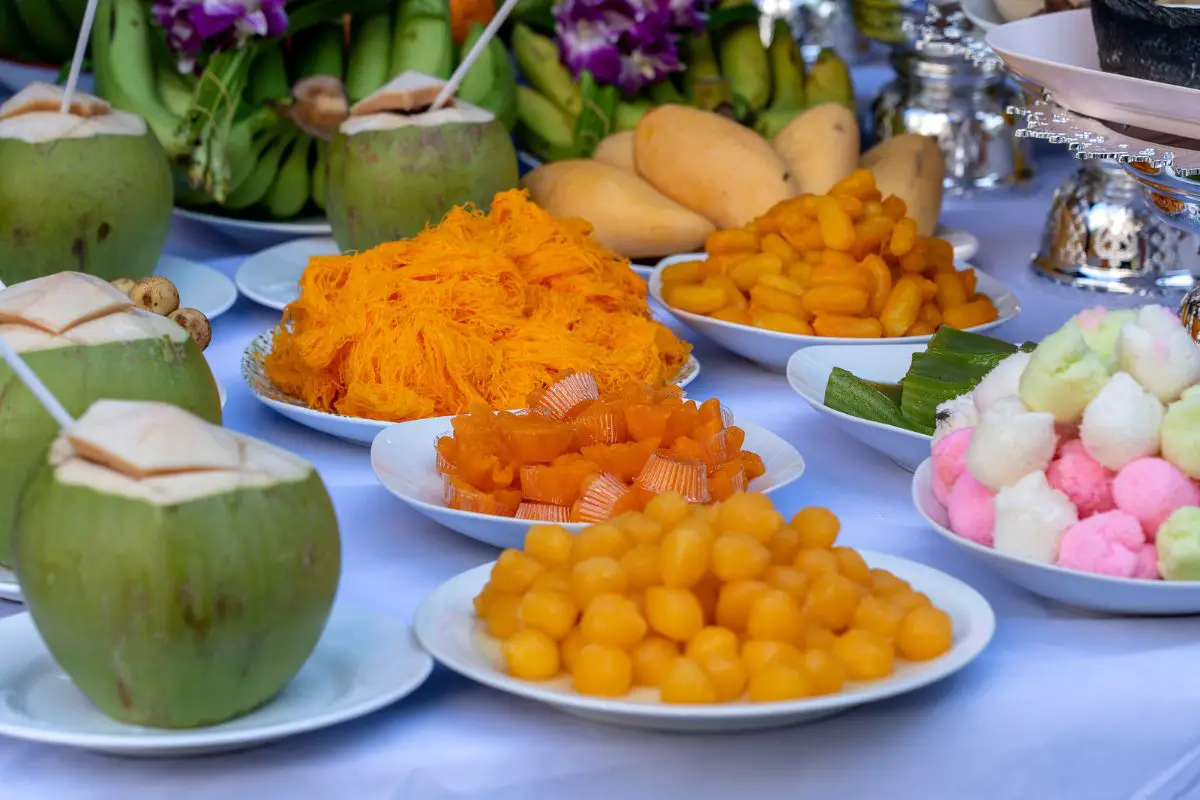When it comes to spiritual or religious practices, offering food is a common element shared by many traditions worldwide.
You might find yourself wondering whether it’s appropriate to eat these food offerings once they’ve served their purpose.
The answer varies based on cultural and religious contexts, but in many cases, consuming the food after it’s been offered can be a way to honor the ritual and connect with the divine or ancestral energies.
Some cultures view the act of eating food offerings as a means of absorbing the blessings or essence that have been bestowed upon them.
For instance, after a food offering has been made, certain traditions might believe that the spiritual entities consume the spiritual essence of the food, leaving the physical form for you to partake in.
In other instances, specific guidelines dictate how to dispose of these offerings respectfully.
These could range from returning the food to nature to sharing it with others as an act of charity.
Recognizing these customs is crucial to show respect for the practices and beliefs that surround you.
So, if you ever find yourself with food that has been offered to a deity, ancestor, or spirit, it’s important to consider these practices and follow the ones that resonate with your own beliefs or the tradition you are honoring.
Cultural Context
When considering eating food offerings, it’s important to understand that practices vary greatly depending on religious beliefs and regional customs.
Your personal experience with these offerings will likely reflect the culture you are engaging with.
Religious Beliefs
Hinduism: In Hindu rituals, it is common for food to be offered to deities during a puja and later consumed by worshippers.
This act is seen as taking the prasad, or divine grace, which brings blessings.
Buddhism: Buddhist traditions may require the food to be left for a period of time for the spirits or deities.
After this, it might be shared among participants, embodying the concept of merit-making through generosity.
Christianity: The act of consuming bread and wine in Christian Communion can be thought of as a symbolic food offering.
The bread and wine represent the body and blood of Christ and are consumed by the worshippers.

Regional Practices
East Asia: In countries like China, food offerings are often made to ancestors with the belief that the spirits of the deceased can receive the essence of the food.
The physical food is then sometimes eaten by family members.
Latin America: During celebrations like Día de Muertos in Mexico, it is customary for families to prepare favorite dishes of deceased relatives and place them on altars.
These offerings are meant to nourish the souls and may be eaten later by the living as a way to commune with their ancestors.
Middle Eastern Cultures: Food offerings within various Middle Eastern cultural contexts might be connected to acts of charity and hospitality.
Often, foods are shared within the community after being dedicated in a religious context.

Food Safety and Health Considerations
When incorporating food offerings into your rituals, it’s essential to be mindful of food safety and health to ensure that what you consume remains safe and beneficial to your well-being.
Perishability
Certain food offerings, like fruits and prepared meals, are subject to spoilage.
It’s vital to know the shelf life of these offerings and consume or remove them before they become unsafe.
For example, dairy products and cooked dishes should be consumed or safely disposed of within a few hours at room temperature, as recommended in guidelines on keeping food safe.
Preparation and Handling
The way you prepare and handle food offerings can significantly impact their safety.
Always wash your hands and clean surfaces before preparing food to prevent contamination.
Furthermore, when preparing offerings, follow the steps of Clean, Separate, Cook, and Chill to minimize the risk of foodborne illnesses.
These guidelines are crucial to follow, as outlined by the CDC’s advice on food safety.
Etiquette and Respect
Understanding the etiquette and respect around food offerings will allow you to approach these practices with propriety and reverence.
Offering Rituals
When you offer food to deities, ancestors, or spiritual entities, it’s important to consider the type of food you’re presenting.
Different cultures have their own preferences; some may specify fruits and beverages, while others might involve fully prepared meals.
For instance, within some traditions, specific items are chosen for their symbolic meaning, and these should be presented with care and attention to detail.
Always ensure that your offerings are clean, fresh, and well-prepared—it’s a sign of respect to both the spiritual entities and your commitment to the ritual.
Accepting Offerings
After the appropriate time has passed, or the ritual concludes, you may wonder if you can consume the food that was offered.
This practice varies across cultures and can also depend on the intention behind the offering.
In some traditions, eating the food afterward can be seen as participating in the blessings and is considered a form of spiritual nourishment.
Other practices may view the consumption of offerings as disrespectful or not permissible.
It’s important to research or ask about the specific practices and beliefs of your tradition before participating.
When in doubt, err on the side of caution, and follow the guidelines set by your cultural or religious community.
